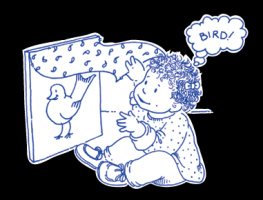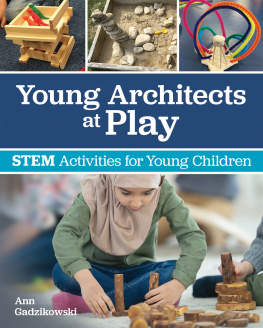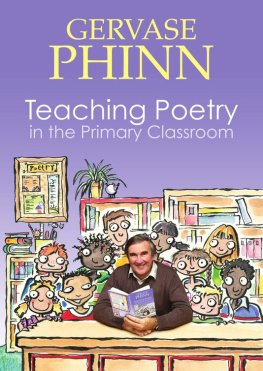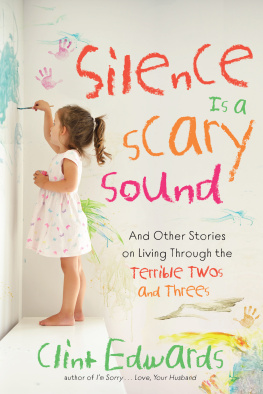
Published by Redleaf Press
10 Yorkton Court
St. Paul, MN 55117
www.redleafpress.org
2014 by Deborah Falasco
All rights reserved. Unless otherwise noted on a specific page, no portion of this publication may be reproduced or transmitted in any form or by any means, electronic or mechanical, including photocopying, recording, or capturing on any information storage and retrieval system, without permission in writing from the publisher, except by a reviewer, who may quote brief passages in a critical article or review to be printed in a magazine or newspaper, or electronically transmitted on radio, television, or the Internet.
First edition 2014
Cover design by Jim Handrigan
Cover photograph by Deborah Falasco
Interior design by Percolator
Typeset in Apex and Cassia
Interior photographs by Deborah Falasco
20 19 18 17 16 15 14 13 1 2 3 4 5 6 7 8
Library of Congress Cataloging-in-Publication Data
Falasco, Deborah.
Teaching twos and threes : a comprehensive curriculum / Deborah Falasco.
pages cm
Includes index.
Summary: With a focus on the special joys of working with two- and three-year-olds, this comprehensive curriculum meets the unique developmental needs of this age group and supports critical early learning. Teaching Twos and Threes includes a wide range of activity ideas and learning experiences, as well as strategies to help you plan a thoughtful program, build positive relationships with young children, and support learning in all areas Provided by publisher.
ISBN 978-1-60554-257-7 (e-book)
1. Early childhood educationCurriculaUnited States. 2. Early childhood educationActivity programsUnited States. 3. Child developmentUnited States. I. Title.
LB1139.4.F35 2013
372.71dc23
2013004538
Printed on acid-free paper
To Jennifer, Brian, and Katrina
my forever inspiration

Contents
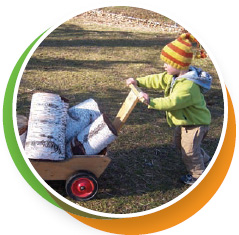
I would like to thank the following people: my parents (who gave me my foundation), my children (who taught me the most about children), my husband (who dealt with my many hours of college studies and book writing), my siblings, and the friends who supported and encouraged me to aspire to be more and step furtherbelieving in me. To the many children who have shared the journeys and adventures with me (from my family child care days to my current nook at Vassar) and all of my amazing models who brought this book to lifethank you! May all children feel the love and respect of their adults, and spend their days with a smile and a warm heart!

I began my career in family child care. I loved the small group, the cozy environment, and the intimate relationships I developed with families. I will forever cherish those memories.
Toward the end of my family child care days, I began to pursue my formal training as an educator. I felt that I had a great deal of experience, but I needed to combine my practical skills with a better understanding of education to best serve children and their families.
Eventually I closed my family child care and went to work at a preschool for children with special needs. I loved that experience as well, and I enjoyed learning from the master teachers there.
I then found my way to the laboratory nursery school on the campus of Vassar College. This school was very different from my first two early childhood environments. A laboratory school is a teaching and learning environment for both children and adults. Each classroom has an observation booth to help student educators and their professors discreetly observe the children, teachers, and classroom environment. I remember my first day in the booth, watching the two-year-olds and feeling at home. I had a passion for this age group.
I earned my bachelors degree in early education. I then decided to get my masters degree, focusing on the zero-to-three age group. I felt this was a special age in childrens development, and I valued the integral role families play in the lives of children three and younger. I searched for very particular degree programs. I earned a graduate certification as an infant-toddler specialist. After that, I pursued my masters degree in human development, specializing in infants, toddlers, and their families. By this time, I was teaching in a classroom of two- and three-year-olds. My day job helped me practice what I was learning, and my masters program helped me question and reflect on my teaching practice.
Eleven-plus years later, Ive loved every moment Ive spent with two- and three-year-olds. Becoming an infant-toddler specialist and mentoring others has been very gratifying for me. I delight in working closely with childrens families while teaching and loving their children. Two- and three-year-olds are very busy, curious, lovable, and fun. I cannot imagine an age I would rather work with!
My profession is my passion. I want to share my experiences in and ideas on teaching twos and threes with as many teachers as I can. Ive written this book to help you become mindful of this age groups needs in planning your curriculum. I also want to help you become reflective about your teaching practice.
Creating a balanced program for twos and threes is no easy task. Society places many academic expectations on preschoolers and prekindergarteners, and these expectations often reach down to even younger children. Children between two and three years old are no longer babies or young toddlersand yet they are not preschoolers either. I have taught this age group for many years, and the growth between the second and third year still amazes me. This book is intended to help teachers see two- and three-year-olds as they are, developmentally speaking, and to help teachers create developmentally appropriate programs that are stimulating and authentic for all twos and threes.
In the past, I have offered workshops geared toward teachers and caregivers of older toddlers (eighteen months and older) and two-year-olds. I began by asking the participants where they saw their biggest challenges and their best delights. Almost all the educators mentioned difficulty with young childrens impulse control, short attention spans, toileting, varying ability levels, pushing, hitting, biting, and testing limits. The participants enjoyed the wonder in working with the under-three population. The activities they noted as enjoyable were singing and dancing, hands-on art, and watching new experiences.
We all have felt the occasional struggle and exhaustion of working with this age group. Fortunately, even more often we feel the delight of working with twos and threes. We get the honor and pleasure of being an important helper at a crucial moment in a childs lifethe developmental leap into independence. How we touch the lives of our students and families in this moment leaves permanent footprints.
All about This Marvelous Age Group
Working with two- and three-year-olds is a lively experience. Twos and threes are sweet and feisty all at once. They are tender, warm, and loving. They are bursting with giggles and mischief. Everything is new and exciting to them. They look at the world with wonder and anticipation. Throughout their days, they are constantly finding out how things work and what happens next.
Next page

